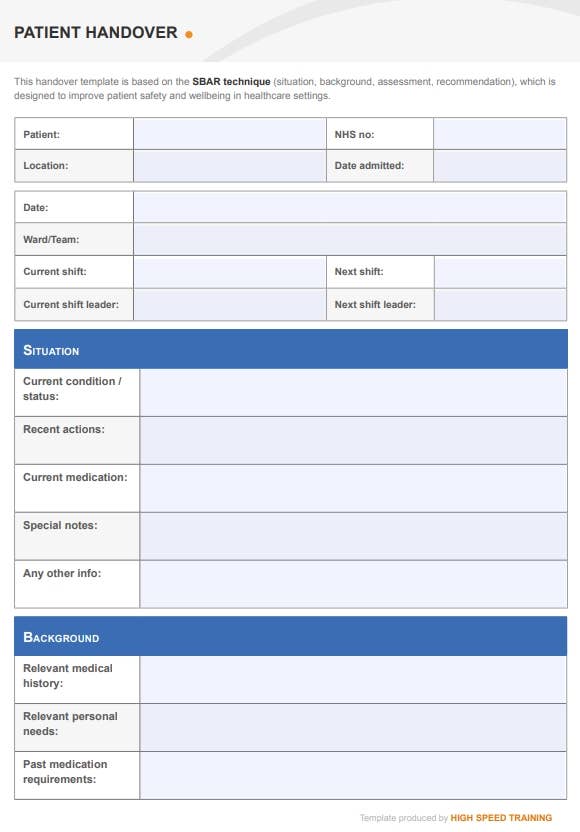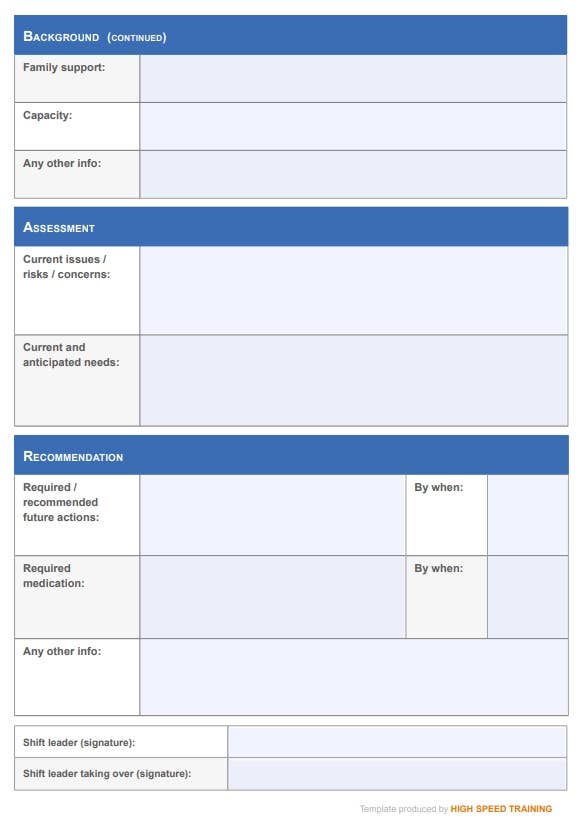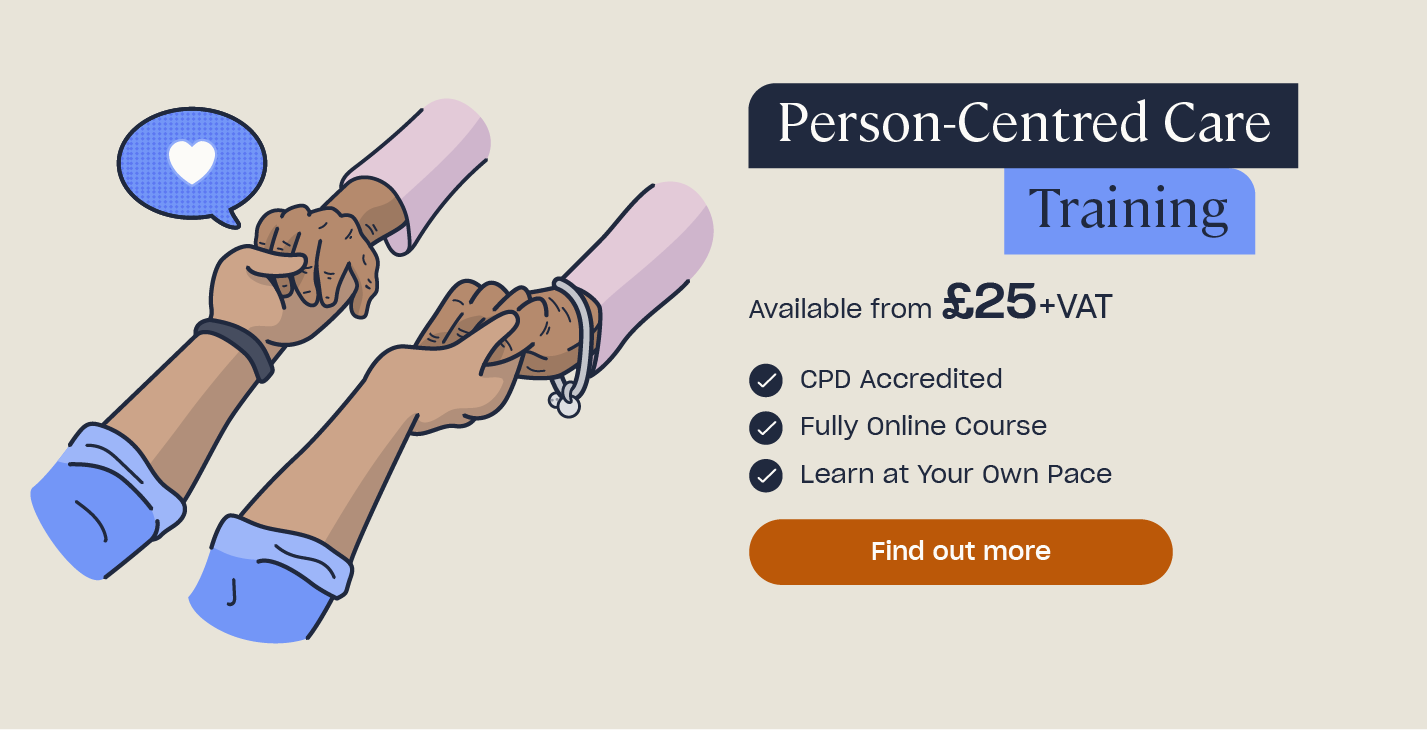How to Conduct Effective Handovers in Nursing and Patient Care
It may feel like there’s simply no time to stop in healthcare. There’s always a buzzer ringing, a set of test results ready, and medication waiting to be administered. However, taking the time to properly hand over your shift to new staff is vital for streamlining your patients’ care.
Studies continually show that an ineffective handover system contributes to delays and errors in care, which you simply can’t afford to let happen. A lack of coordination will leave your team feeling overwhelmed and could potentially put the wellbeing of your service users at risk.

Therefore, you should understand the most effective handover methods and know what information to prioritise in your handover, which we will clarify throughout this article. This will help you feel more confident at handing over to your colleagues so everyone can deliver the best care possible.
We also provide a blank downloadable patient handover template at the end of this article that you can use in your healthcare setting.
What is the Importance of a Nursing Handover?
As healthcare settings need to work around the clock to provide care, shift changeovers are inevitable. However, the problem is that staff changes can present a huge risk to service users. The new nurse may not be able to properly pick up where the previous person left off.
Therefore, an effective handover procedure is vital, as it enables you to properly transfer patient information, responsibility, and accountability to a new person or team. Otherwise, you may spend more time chasing up patient information than delivering care.
An effective handover in nursing brings numerous benefits, such as:
- Keeping patients’ care progressing smoothly.
- Making patients feel calmer and more confident in your healthcare service.
- Reducing the need for service users to repeat themselves.
- Helping to maintain records of a patient’s progress.
- Helping staff to deliver more consistent care.
- Allowing staff to communicate issues and concerns, so the next person can address them swiftly.
- Promoting person-centred care.
- Saving staff time and energy, which helps to prevent stress and minimise mistakes.
- Helping staff feel more prepared and confident to do their job.
- Promoting a culture of teamwork and support in your care setting.
This is why each handover needs to be as comprehensive and clear as possible, so staff on the next shift can hit the ground running.
How to Carry Out Effective Nursing Handovers
To carry out well-prepared handovers, you must know what information to include and prioritise. After all, you may not have loads of time to get through a ton of important information, particularly anything critical to a person’s health. The next staff need to know where to focus their energy first.

It’s also important to strike a balance between comprehensive and excessive. You must know how to organise all the necessary information concisely, so staff can easily grasp and remember it without becoming overwhelmed. Practising giving handovers and being consistent with how you structure them will help you achieve this.
To deliver an effective handover, you should consider these 3 key areas:
- Time and place.
- Delivery.
- Contents.
Let’s look at each of these in more detail.
Need a Training Course?
Our Information Governance Training is designed to help those who work in health & social care, giving you the tools to understand your obligations around data protection. All our training is CPD accredited and fully online, meaning you can study anywhere, anytime and download your certificate in a matter of hours. See how else we might be able to support you with our entire range of Safeguarding courses.
Time and place
What’s the best location and time to give the handover?
- Carry out your handovers at the same time for each changing shift and give yourself enough time to cover everything important. You usually won’t need more than half an hour.
- The handover should take place during work time, for both the person giving and receiving the handover. Therefore, shifts should be coordinated accordingly.
- Handovers will usually occur three times a day to account for all shift changeovers: once at the start of the morning shift for night staff to handover, again when the morning staff leave and the afternoon/evening shift starts, and lastly for the afternoon/evening staff to handover to those on the night shift.
- Host the handover in a location where you won’t be interrupted (unless it’s an emergency).
- If you’re carrying out a handover for just one patient, host it at their bedside so you can involve them.
Delivery
How can I deliver a handover to listeners effectively?
- Prepare beforehand. Use written records and/or intranet-based files to help you deliver information accurately. Using an electronic system is particularly beneficial when handing over a number of patients. It enables everyone to easily view and amend the information in one place. Remember to process this information securely and confidentially.
- Use a consistent format, such as SBAR. This stands for situation, background, assessment, and recommendation. Many healthcare settings use this structure for their handovers, as it enables you to record information in a memorable and focused format, with an appropriate level of detail. Staff will know exactly what to cover when preparing the handover and can anticipate what will be covered if they’re receiving it. Therefore, it helps to reduce repetition, confusion, and oversights. The NHS provides a useful SBAR template that you can apply to handovers.
- Avoid complicated jargon and unclear abbreviations. Communicate information in a simple, clear style and only use standard abbreviations that everyone uses.
- Leadership. Everyone listening to the handover must understand the information you share, which means you need their full attention. Take ownership of your handover: ensure that people don’t have conversations amongst themselves while you speak. Furthermore, you should prevent people from continuously interrupting with questions. Encourage them to save their questions until you’ve finished discussing each patient or the entire handover.
Content
What should I include in my handover?

- The identity of the patient(s). If your healthcare setting uses initials to protect patients’ anonymity, remember to refer to them by name during the handover rather than by their initial or number. This helps you to promote person-centred care, as you’re acknowledging the patient as a person, not just a figure.
- The location of the patient(s).
- Their current condition/status and whether or not it’s stable.
- Actions you have recently taken.
- Their current and anticipated needs.
- Any medication they are on or need.
- Relevant background and/or personal information.
- Any issues or concerns.
- Recommendations of what action the next staff need to take.
- The time frame within which certain tasks need completing.
By following the SBAR structure discussed in the above section, you should be able to cover this information in your handover effectively.
All these details should ensure that there are no delays or miscommunications that put patients’ safety at risk. They will enable staff in the next shift to address the immediate needs of patients and maintain a consistent, coordinated level of care.
Free Downloadable Patient Handover Template
Below is a free, blank patient handover template that you can download and use in your healthcare setting. It covers all the areas in the above section and is based on the SBAR structure mentioned throughout the article.


Further resources:
- Using a Personal Development Plan in Health and Social Care
- Person-Centred Care Training Course
- What are the 6 Principles of the Care Act 2014?
- Champions in Healthcare: Role and Responsibilities











